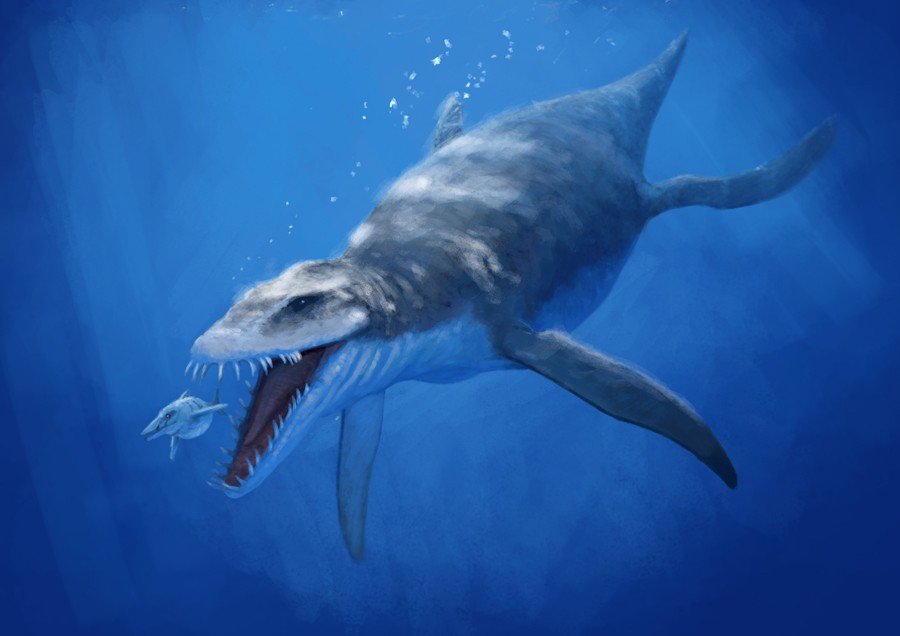Liopleurodon (Smooth-Sided Tooth)
Basic facts
22 feet (6.6m) length
Late Jurassic
Europe
Carnivore
Liopleurodon, a fearsome predator of the Late Jurassic seas, has captured the imaginations of both scientists and the public alike. With its colossal size and powerful jaws, Liopleurodon was an apex predator in the prehistoric oceans.
Liopleurodon, scientifically known as "Liopleurodon ferox," belongs to the Pliosauroidea superfamily, specifically classified under the family "Liopleurodontidae." It existed during the Late Jurassic period, approximately 160 to 155 million years ago. Fossil evidence of Liopleurodon has been found in various regions, including England and France.
The name "Liopleurodon" originates from the Greek words "leios," meaning "smooth," "pleura," meaning "ribs," and "odon," meaning "tooth," referring to the unique smoothness of its ribs and its formidable teeth.
Liopleurodon was an enormous marine reptile, belonging to the group of plesiosaurs. With its elongated body and flippers, it was ideally adapted for a life in the water. Some species of Liopleurodon are estimated to have reached lengths of up to 22.5 feet (6.6 meters), while others might have grown even larger.
Its most remarkable feature was its massive head, housing a set of incredibly powerful jaws equipped with large, conical teeth, perfect for capturing and gripping its prey. The large eyes of Liopleurodon would have provided excellent vision in the underwater environment, enabling it to hunt efficiently.
Liopleurodon was undoubtedly a dominant predator in its ecosystem, using its strong jaws and sharp teeth to seize and devour its prey. Its four flippers enabled precise movements, allowing it to steer with agility while pursuing fast-moving prey.
It is likely that Liopleurodon was an opportunistic hunter, ambushing unsuspecting prey from beneath and employing rapid bursts of speed to catch its meals. Its robust body and strong jaws would have made it a formidable adversary, and it is believed that Liopleurodon held a crucial position at the top of the marine food chain.
While plesiosaurs were marine reptiles, some species, including Liopleurodon, are thought to have ventured into estuaries or nearshore environments, perhaps giving birth or foraging for food. However, their primary habitat remained in the open ocean.
